There are many edible grasses that you can find growing wild around the world that you can eat. In fact, most of us already do. Some are even cultivated as food crops.
But not everyone knows how to identify these plants. This article will teach you how to identify edible grasses that you may not already know about.
I’ll also share what they look like, tips on where to find them and how to prepare them. It’s a fun way to learn something new while eating delicious foods.
- Related article: Edible Plants in the Wild
Can Humans Eat Grass?
Grass is generally not a great source of food, but can be eaten in survival situations. There are a few species that are safe to eat, but they don’t have a good nutritional value for humans.
Typical grass is rich in cellulose, which our stomachs cannot digest. Herbivorous grazing animals, such as cows, have evolved digestive systems which allow them to break down cellulose.
Despite the cellulose in grass, humans have found ways to process a few types of grass in a way that makes them better for us. These have in fact become staple foods all around the world. The well-known wheat, corn and rice are all grasses.
The best way for humans to get energy from grasses is by harvesting the protein and carbohydrate-rich seeds, drying them, and processing them to make them more digestible. The most common way is to ground them into flour.
This is not to say that eating grass greens will harm you, but it will simply not be very useful in keeping you healthy. Apart from the cultivated varieties, there are also plenty of wild grasses that are safe to eat and can be nutritious after some processing.
Can Humans Cook Grass and Eat It?
The best way to eat most grass is to separate the seeds from leaves and stems. The grass seeds can be cooked, and are in fact much more digestible this way. When boiled, they soften and become easier to eat. You can make a sort of porridge-like meal, or alternatively soak them until soft.
If you’re not in a survival situation, the best way to prepare and use them to dry and ground them. Similar to the way it’s done to make flour from wheat or corn.
The green parts, on the other hand, can theoretically be cooked and eaten, but it doesn’t improve their nutritional value. The fibers cannot be broken down by boiling. It’s also not a good idea to ingest too much of these greens, as they could cause digestive issues.
Let’s now take a look at the most common edible grasses.
1. Bamboo (Bambusa species, Phyllostachys species, Guadua species, Arundinaria species)
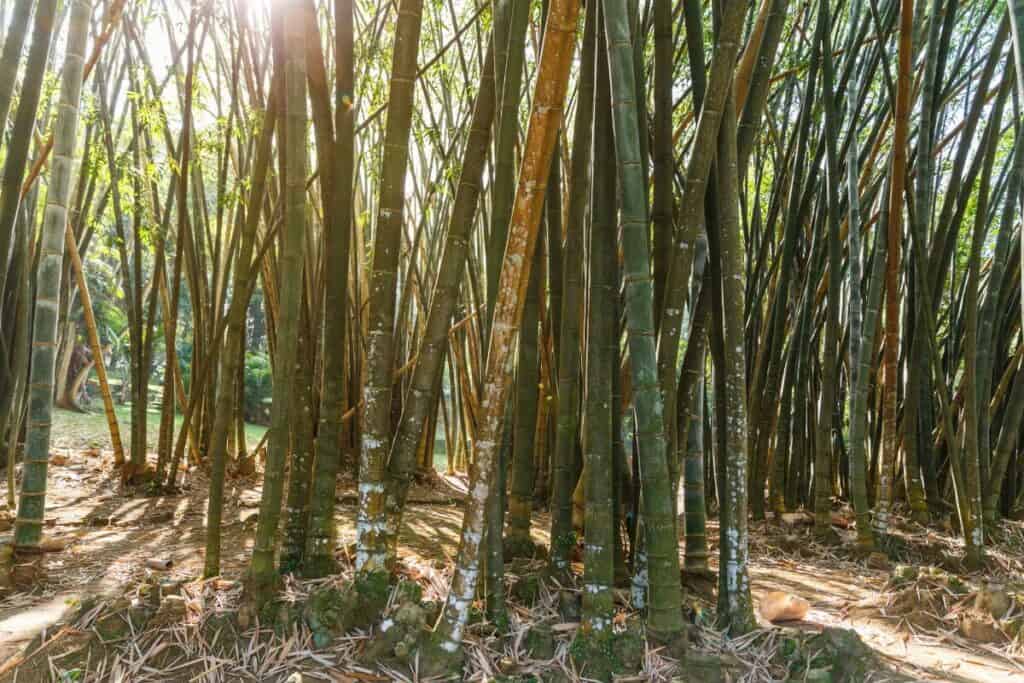
Bamboo is a very well-known plant that is used in many cuisines, especially in Asia. There are more than 100 species of bamboo that are edible, most of them native to Asia and South America.
There are only three species of bamboo native to the US, all three of the genus Arundinaria. Non-native species can also be found in the wild, in particular in the Southern part of the country. This plant grows mostly along riverbanks.
Bamboo stalks need to be peeled to remove the hard exterior layers and the soft inner part should be boiled. It’s best to eat the young shoots, as they are softer. It’s not safe to eat raw as it contains toxic glycosides. The taste is quite mild, although to some people it tastes bitter and similar to asparagus.
Bamboo shoots are low in calories and rich in dietary fiber and they an important source of vitamin B, potassium, iron, and magnesium.
2. Little Barley (Hordeum pusillum)
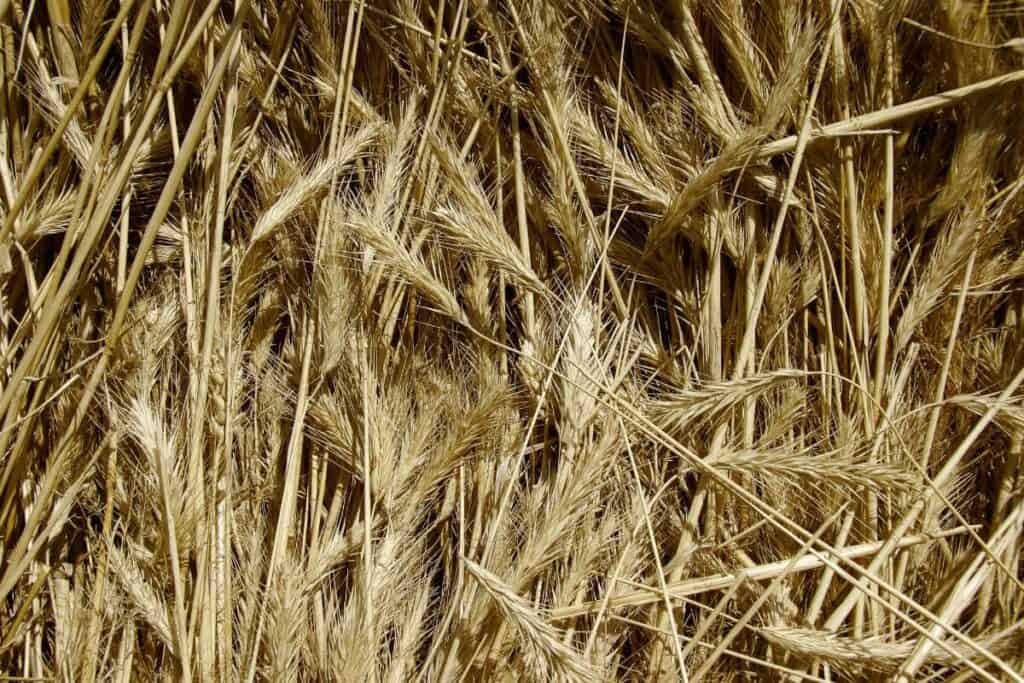
Little barley grass can be found in most of the United States and Canada. It’s closely related to other Hordeum species native to South America, and derivesdfrom the cultivated Eurasian variety, Hordeum vulgare. It grows in sunny areas on dry soils and grasslands.
Barley grains need to be dried, processed, and cooked in order to be eaten. Barley is often used to make juices or powders.
It’s very nutritious and a good source of vitamins. Because of this, it’s sometimes considered a medicinal herb and was one of the staple foods of Native Americans.
3. Bluegrass (Poa species)
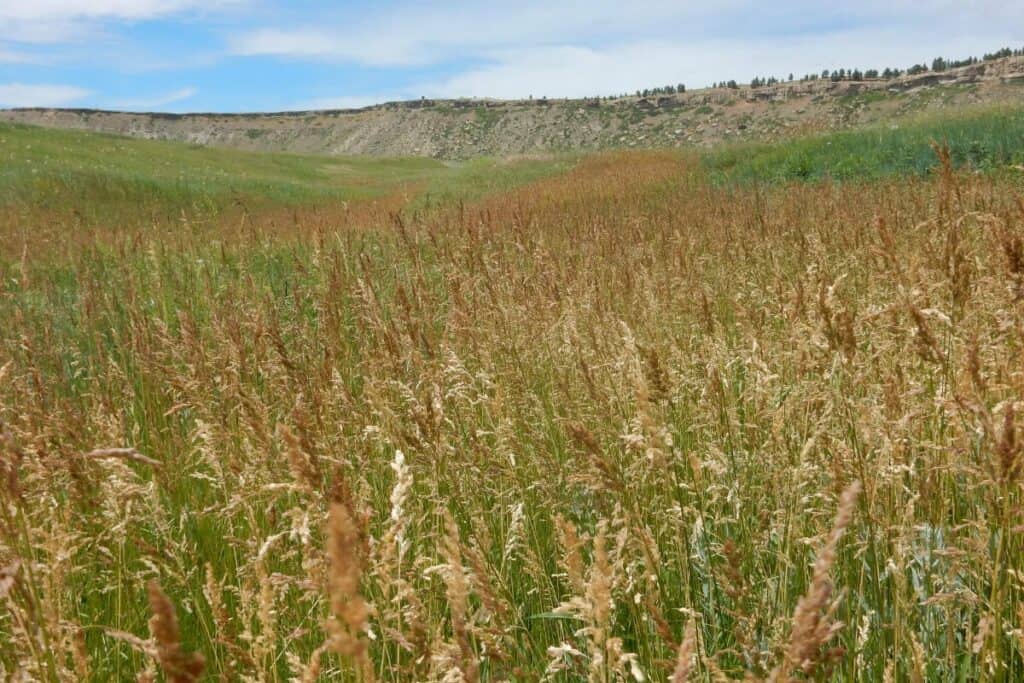
That are many species of bluegrass that grow in North America. The most well-known is Kentucky bluegrass (Poa pratensis). This species is actually not native to the US, but today it’s common in all wet, cool areas.
Bluegrass is mostly used as a pasture grass and some species are grown for ornamental uses. While it is edible and can be eaten raw, it’s not very nutritious.
4. Crabgrass (Digitaria species)
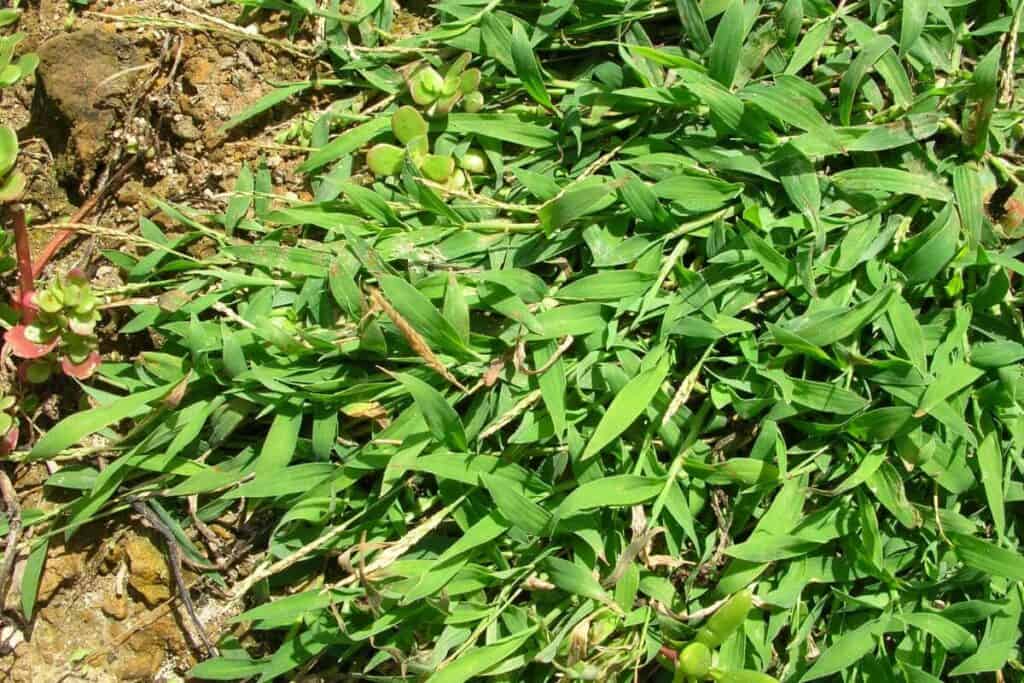
There are two main species of crabgrass which can be found in the US, large crabgrass (Digitaria sanguinalis) and southern crabgrass (Digitaria ciliaris). They both flourish in disturbed open areas and are considered an invasive plant, as they are very fast-growing and can supplant cultivated crops.
Nowadays, crabgrass is mostly used as animal feed. In the past, though, it was cultivated for food, and it still is in some parts of the world. Its seeds can be harvested and ground into flour or used to make couscous.
Crabgrass is very nutritious and in traditional medicine it was used for the treatment of cataracts and gonorrhea.
5. Foxtail Grass (Setaria species)
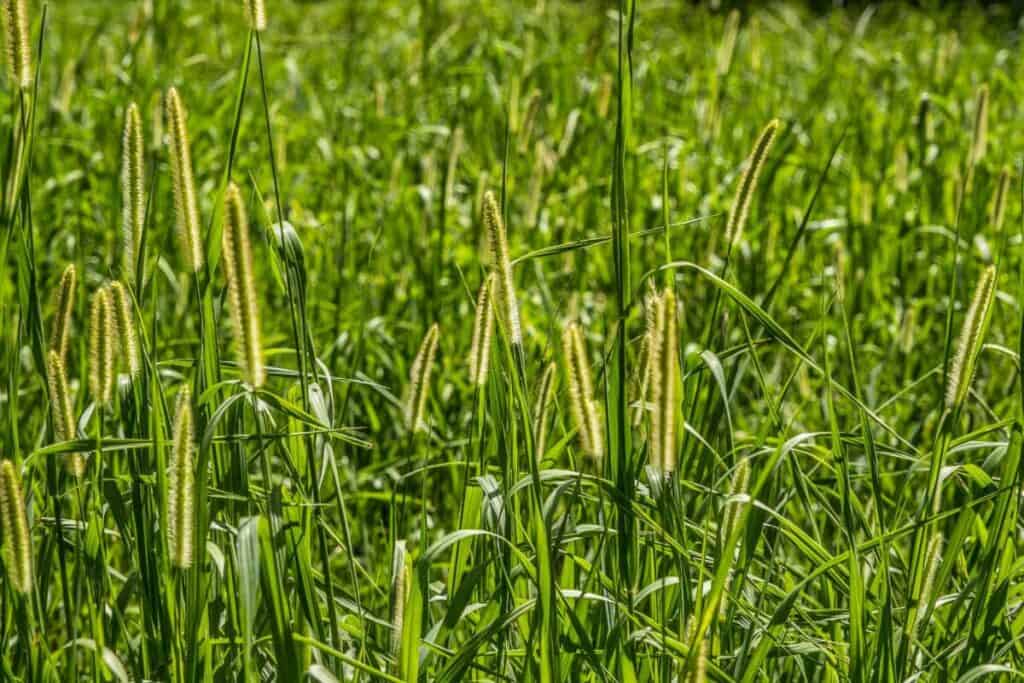
Foxtail grass grows in the United States, Europe, Western Asia, and Africa. Most species thrive in open fields and on roadsides, while others are more common in wet areas. Foxtail grass is grown for food in some parts of the world, as its grain is similar to rice.
The Foxtail grass plant, like most grasses, is harvested for its grains. It can be eaten raw, but is quite bitter and has a hard texture. It’s best to boil them before eating, which greatly improves the flavor.
6. Goosegrass (Galium aparine)
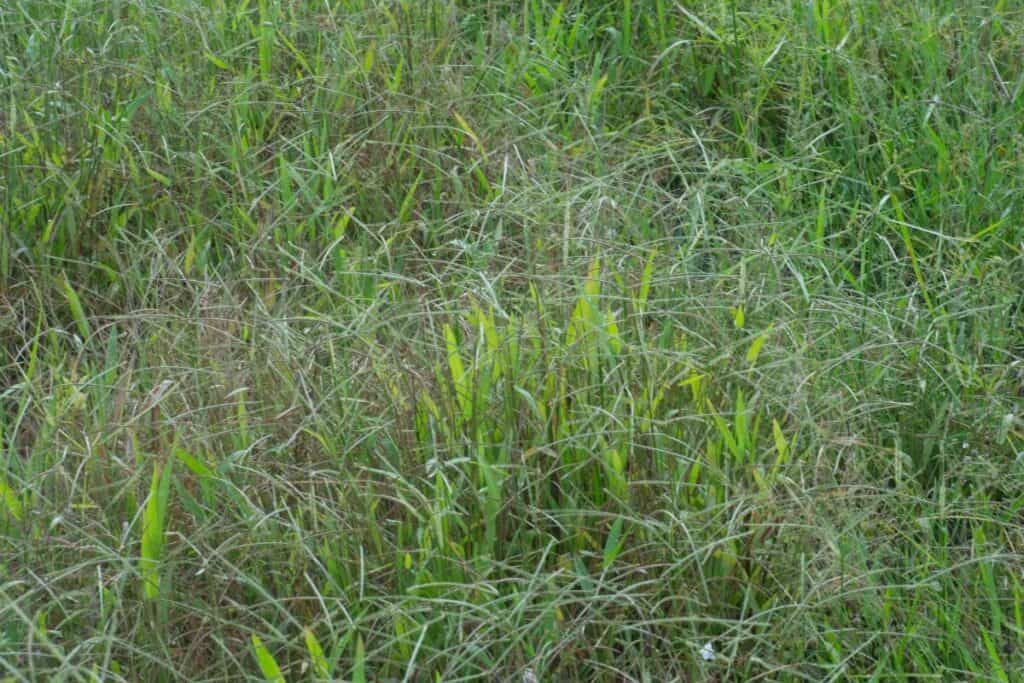
The Goosegrass has stems covered with tiny hairs that cause them to stick to clothing. It’s similar to other species of grass, such as cleavers and bedstraw. Don’t worry too much about confusing them, as all of them are edible.
Goosegrass is very common in North America in wet areas, along streams, and in rich woods.
Due to its hair-covered stems, the Goosegrass can look unappetizing. But these young greens picked in the spring will become very tender when boiled or steamed. The fruits are also edible and can be picked when ripe in June and July. They are often used as a coffee alternative, after being roasted and ground.
7. Lemongrass (Cymbopogon citratus)
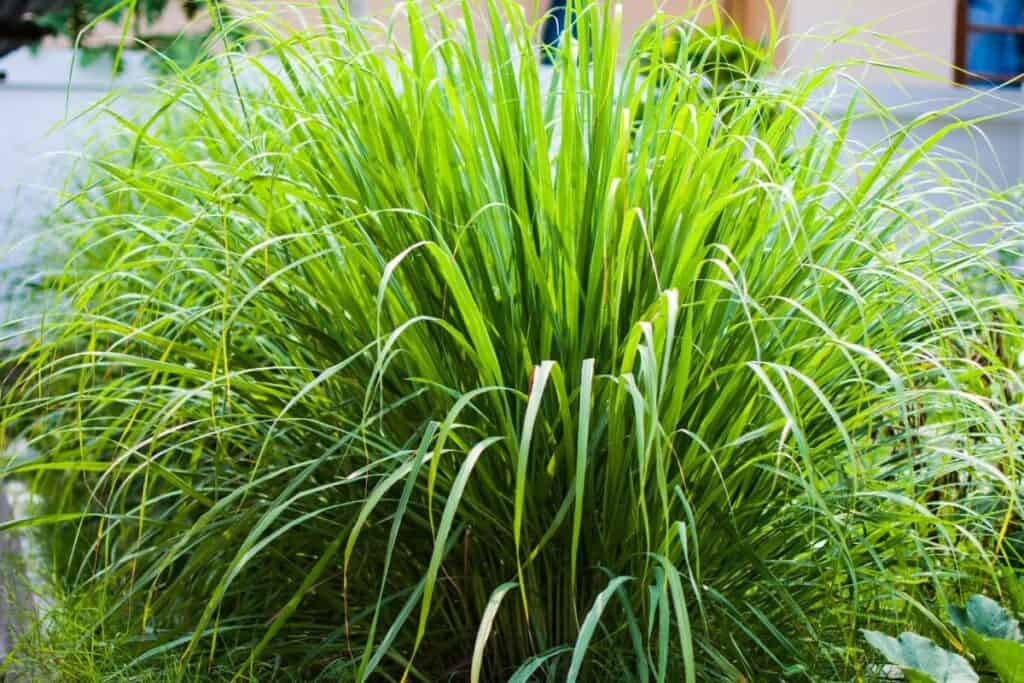
Lemongrass is a perennial plant similar to sorghum. It’s native to Southeast Asia and is cultivated in many tropical regions. In the US, it can be found in the southern states. It’s easily recognizable thanks to its citrus smell.
Lemongrass can be eaten raw. Raw lemongrass is mostly used to add flavor to soups, salads, stir fries, or curries. It can be prepared in two ways, either mashed into a pulp and cooked slowly, or finely sliced or minced to be added at the end of cooking.
The lemony taste is perfect when combined with coriander, garlic, and chili pepper. It can also be brewed to make herbal teas.
8. Wood Millet (Milium effusum)
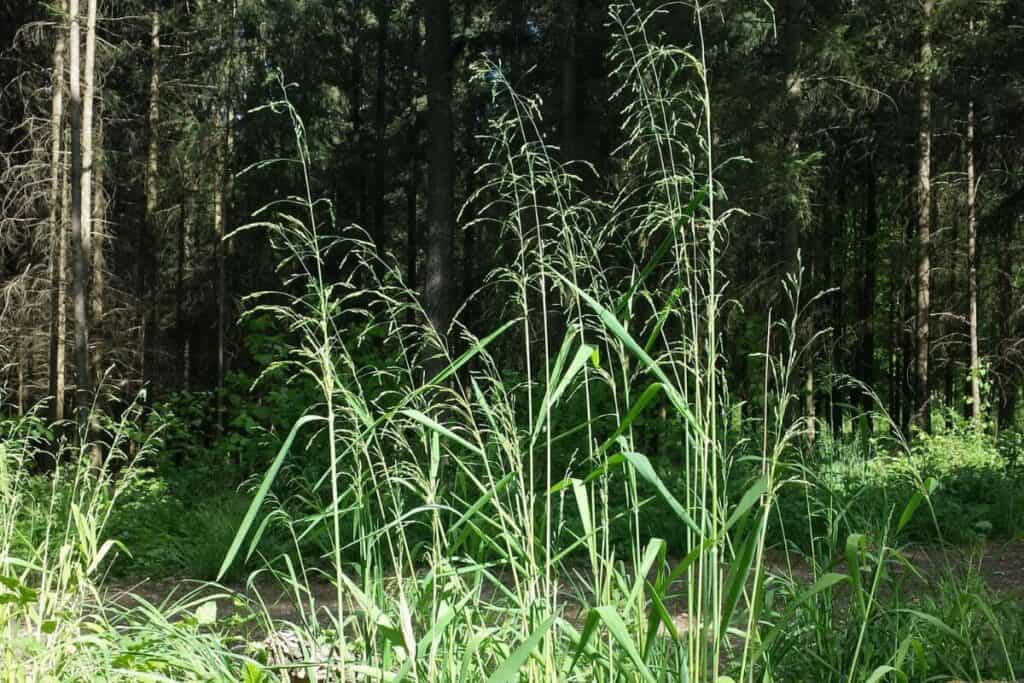
Wood millet grass grows throughout the northern United States and Canada, but also in Europe. It’s not closely related to cultivated millet, of which there are many different species. Its native habitat is wet forests and shaded river banks.
The wood millet wild variety can be used much like the cultivated ones, by harvesting the seeds and grounding them to make flour. This is most typically used to bake bread.
Wood millet has a very pleasant scent and appearance, so it’s also grown as an ornamental plant.
9. Orchardgrass (Dactylis glomerata)
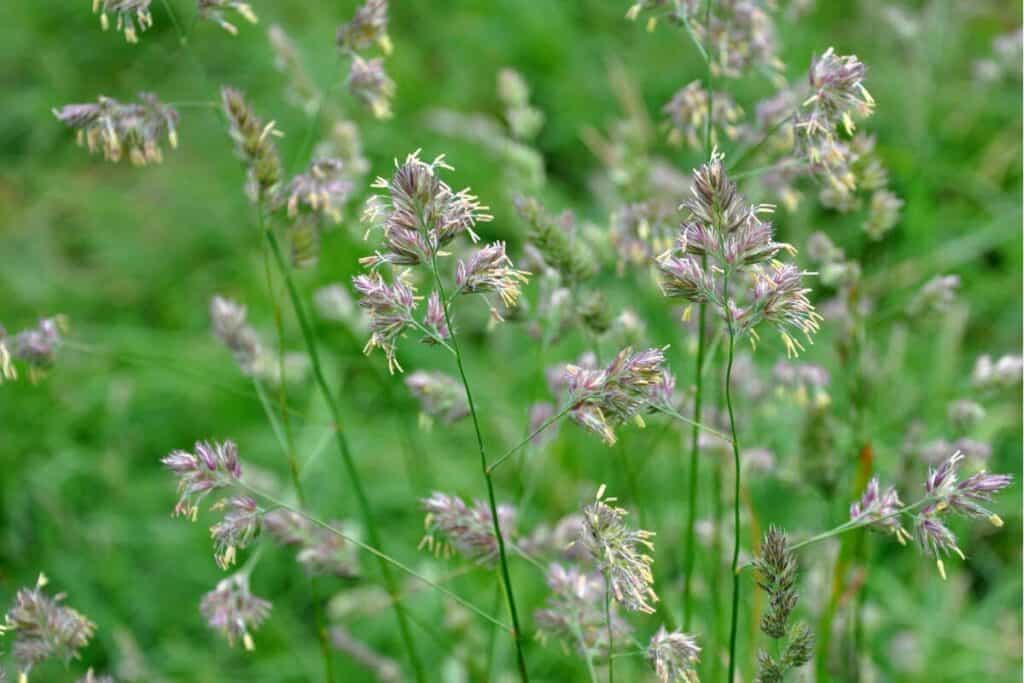
Orchardgrass is mostly used for pasture and forage production. It is grown throughout the United States in rotation with other crops and it’s also found in the wild. It is beneficial to the soil by enriching it with nitrogen.
It’s actually classified as a harmful weed in certain states. Orchardgrass is very adaptable and it can be found in most sunny or partially shaded areas, such as thickets, woodland borders, orchards, fence rows, and savannas.
Orchardgrass is edible for humans but, just like other common pasture grasses, it doesn’t provide enough nutrients to be worth eating, except in survival situations.
10. Ricegrass (Zizania species)
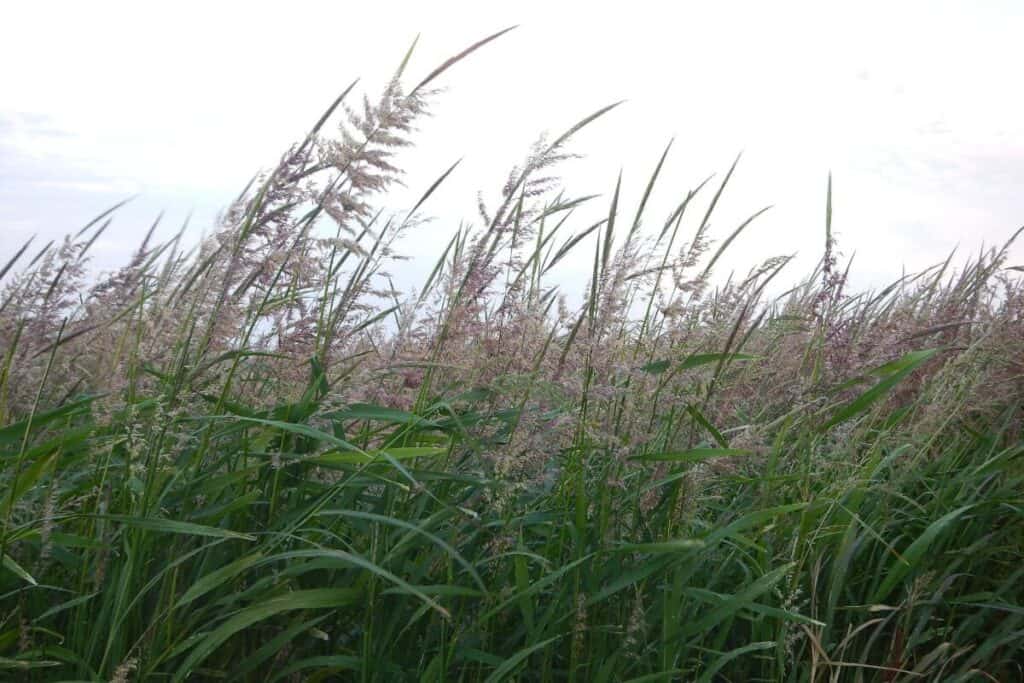
Wild rice is common throughout the continent. It was a Native American traditional food, but today it’s unknown in most areas. Nowadays, you can find “wild” rice in grocery stores, but it’s a cultivated variety that is very far from the true wild one.
Before cooking, the ricegrass grains need to be dried, then parched to harden the kernels, rubbed to loosen the chaff from the kernels, and finally winnowed to remove the chaff. The rice should then be rinsed before boiling it.
Wild rice can be used in plenty of recipes, from soups to porridge to bread. It can also be stored, but the flavor is best in the first month after processing. When fresh, the rice has a pleasant roasted taste from parching.
Ricegrass kernels are high in protein and contain more magnesium, phosphorus, zinc, potassium, copper, thiamin, riboflavin, niacin, vitamin B6, and folic acid than white rice or corn.
11. Wild Rye (Elymus canadensis)
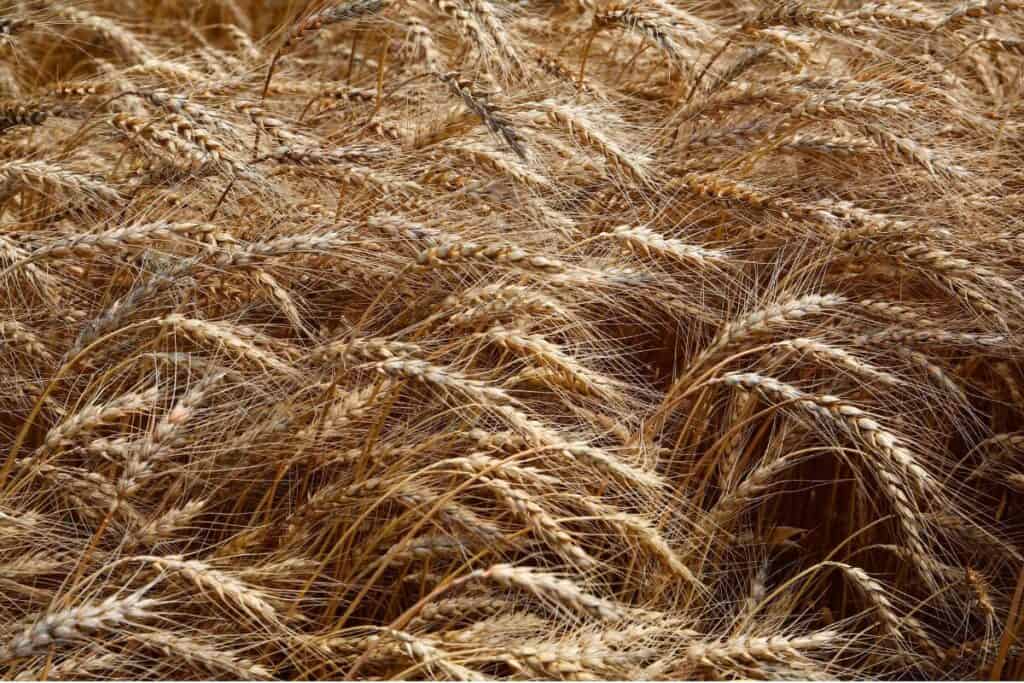
Wild rye is also known as Canada wild rye and can be found throughout North America. It’s very adaptable and can grow in a wide variety of habitats, such as disturbed areas, prairies, woodlands, savannas, and sand dunes. Because of its substantial root system, it is often used to stabilize soils.
Wild rye seeds are edible and can be used to make flour, but they are very small and difficult to separate from the rest of the plant. Despite this, it used to be an important food source for Native Americans, thanks to its good nutritional value.
12. Sorghum (Sorghum bicolor)
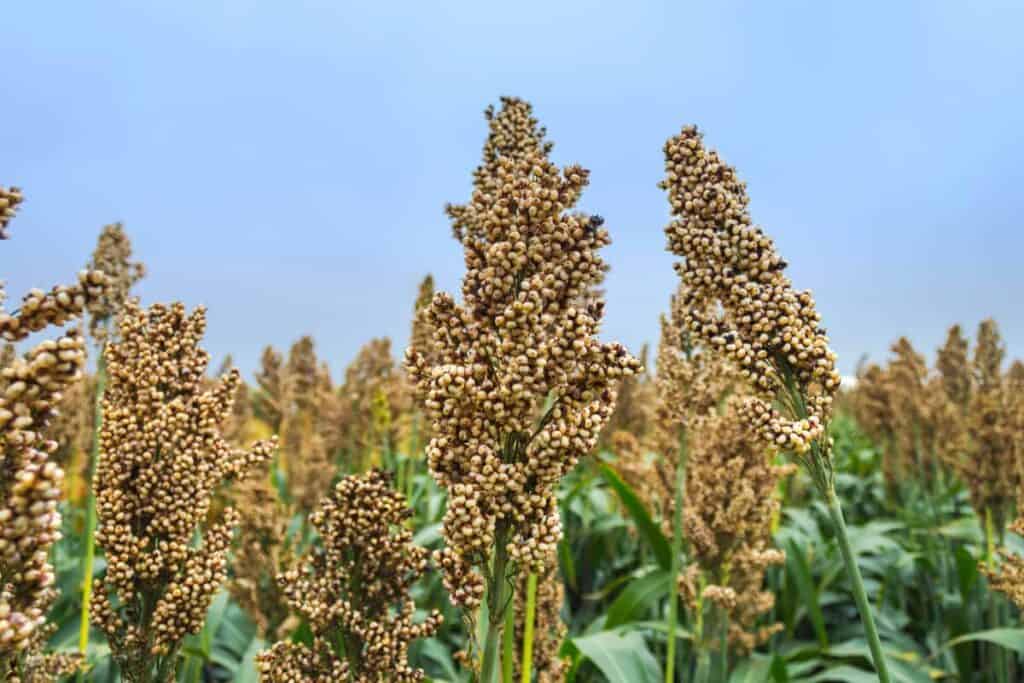
Sorghum grass can be found in the wild, but it’s also one of the most cultivated grains in the world. It’s native to Africa, but today it’s common on many continents, including the Americas.
Sorghum is well-known for being able to grow in unfavorable conditions, like dry and poor soils. There are specific varieties cultivated for different uses, such as for human consumption, for animal feed, to make beer, and also for the production of brooms.
The wild varieties of sorghum grass have smaller grains than the ones cultivated for food, but they can also be eaten. Sorghum grains are gluten-free and can be ground to make flour, which can then be used to bake products suitable for those with celiac disease.
Sorghum has a lower nutritional value than corn, but it’s rich in carbohydrates and proteins. Attention must be paid to avoid harvesting wilted or immature plants, because they could contain toxic substances.
13. Sugar Cane (Saccharum species)
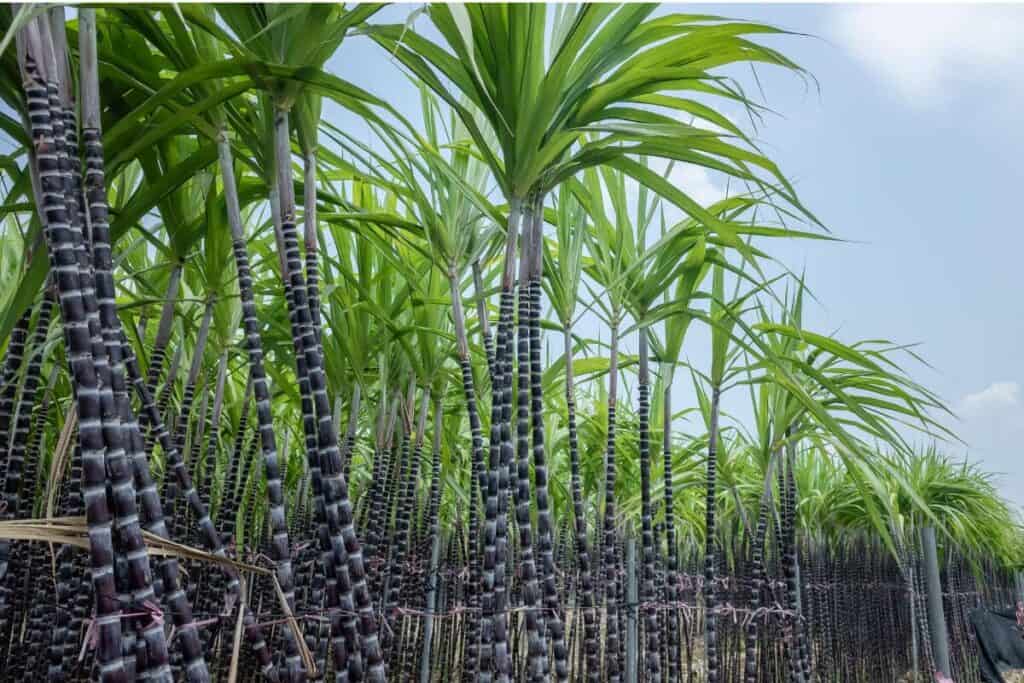
Sugar cane is native to the tropics and is grown in around 111 countries for the production of sugar. In northern America it can rarely be found in the wild, but it’s cultivated in the states of Florida, Louisiana, and Texas. A wild species (Saccharum spontaneum) is common in the Pacific Basin.
Sugar cane can be eaten raw by chewing the stalks to taste the sweet interior. Sugar cane is also used to make a very sweet juice. What is left after the juice has been drunk should be discarded, as it’s very fibrous and difficult to digest.
14. Wheatgrass (Triticum species)
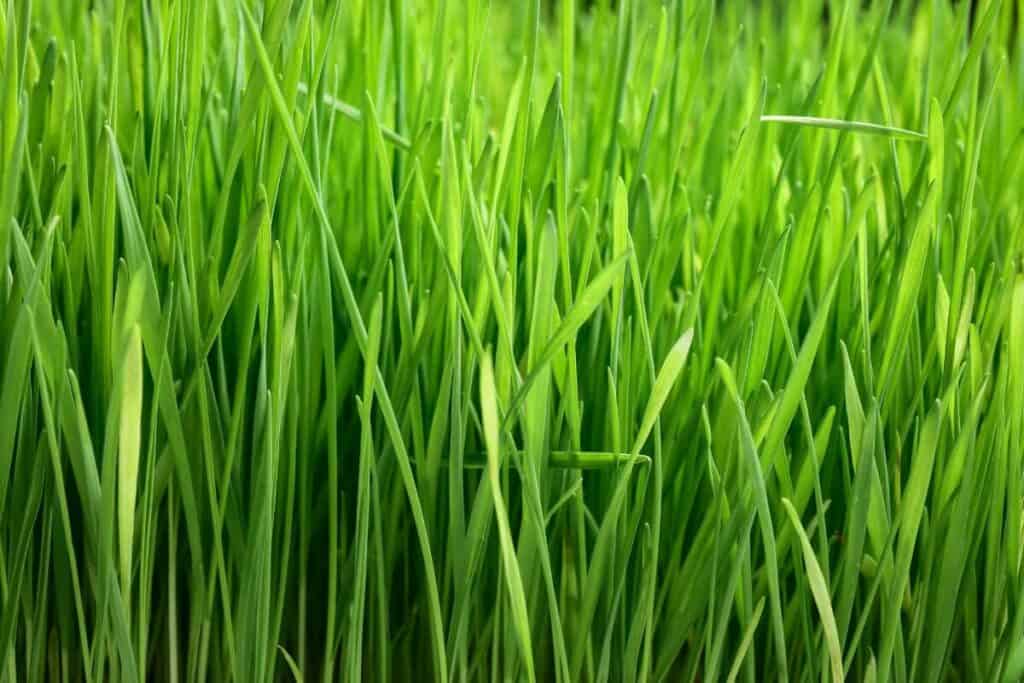
Wheat grass is the second cereal worldwide for amount produced, ranking just after corn. It was first domesticated from wild varieties in the Eastern Mediterranean region, probably around 9600 BCE. It is now cultivated all over the world.
Today, wheat doesn’t exist in the wild anymore, as it was rendered incapable of reproducing autonomously.
What is known as wheatgrass consists of the fresh sprouts and grass blades of the plant. They are green and tender and are often used to make juices, reputed to have medicinal properties.
While these have not been confirmed scientifically, wheatgrass is a good source of proteins, calcium, iron, magnesium, phosphorus, and vitamin E. It can be easily grown at home and is gluten-free, unlike the grains of the plant.
15. Wild Oats (Avena species)
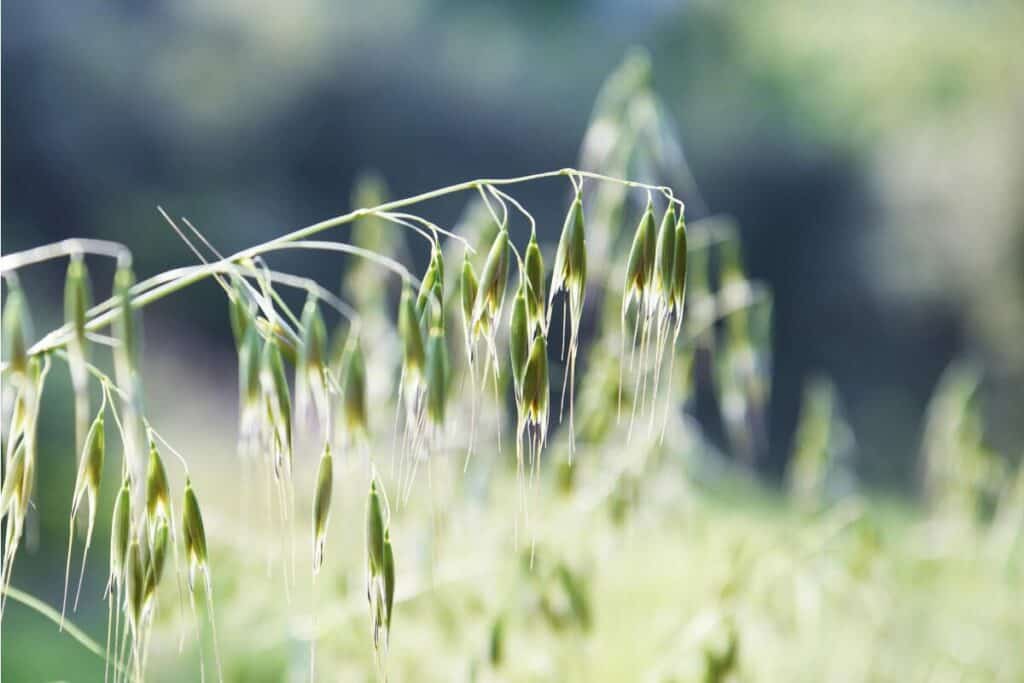
Oats are annual grasses native to Africa and Eurasia, naturalized in most temperate areas of the world. There are many species of oats which are cultivated for hay or forage for farm animals.
Other species are considered weeds, such as Avena fatua, which is the most common weed found in wheat and barley fields. In North America, this species has become widespread in fields and along roadsides.
Despite being considered invasive, the wild varieties are also edible. They yield considerably less than cultivated oats, as they produce smaller seeds in fewer quantities.
Wild oats can be dried and the grains can be ground to make flour or eaten whole. Oats can also be sprouted or used to make juice, which is a much-appreciated plant-based alternative to milk.
Just like the cultivated counterpart, wild oats have excellent nutritional values, as they are rich in protein, magnesium and iron. They also contain good amounts of dietary fiber.
Edible Grasses Final Thoughts
Grass is one of the oldest crops on Earth. The cultivation of grasses dates back more than 10,000 years ago. Today, there are thousands of different types of grasses that are used for food, feed, and fuel. Some of them are even used for ornamental purposes.
The list above contains 15 of the best edible grasses you can eat today. However, there are many other edible plants out there that we didn’t mention here.
For more on plants that are edible, check out these articles:


Are you sure that sugarcane is grown in 195 countries? That seems way too high as that would mean it is grow in every country on earth.
You’re right! It’s actually 111 countries that produce sugar. Thanks for catching that.
I was hoping to find out if the nuts of all nut grasses are all edible. I’m growing Nigerian tiger nuts and have found similar looking grasses in my garden in Cape town and I’m wondering if their nuts are also edible as they do have them on the roots.
I know that tiger nuts are edible, but I’m not sure about the other nuts and roots you’re referring to?
Is there a kind of lawn that I can plant and eat the grass clippings?
There are, but I wouldn’t eat any of the grass clippings 🙂 It’d be better to use the grass clippings in your compost pile.